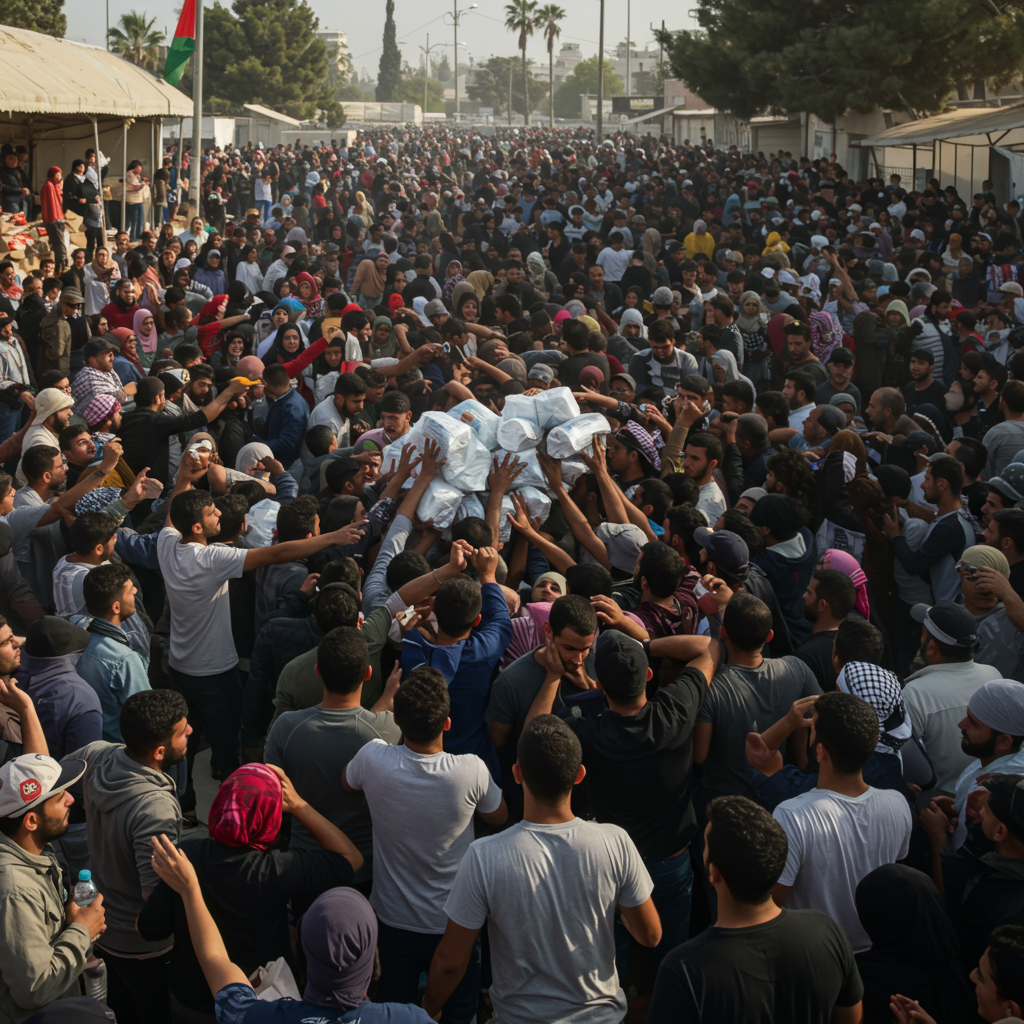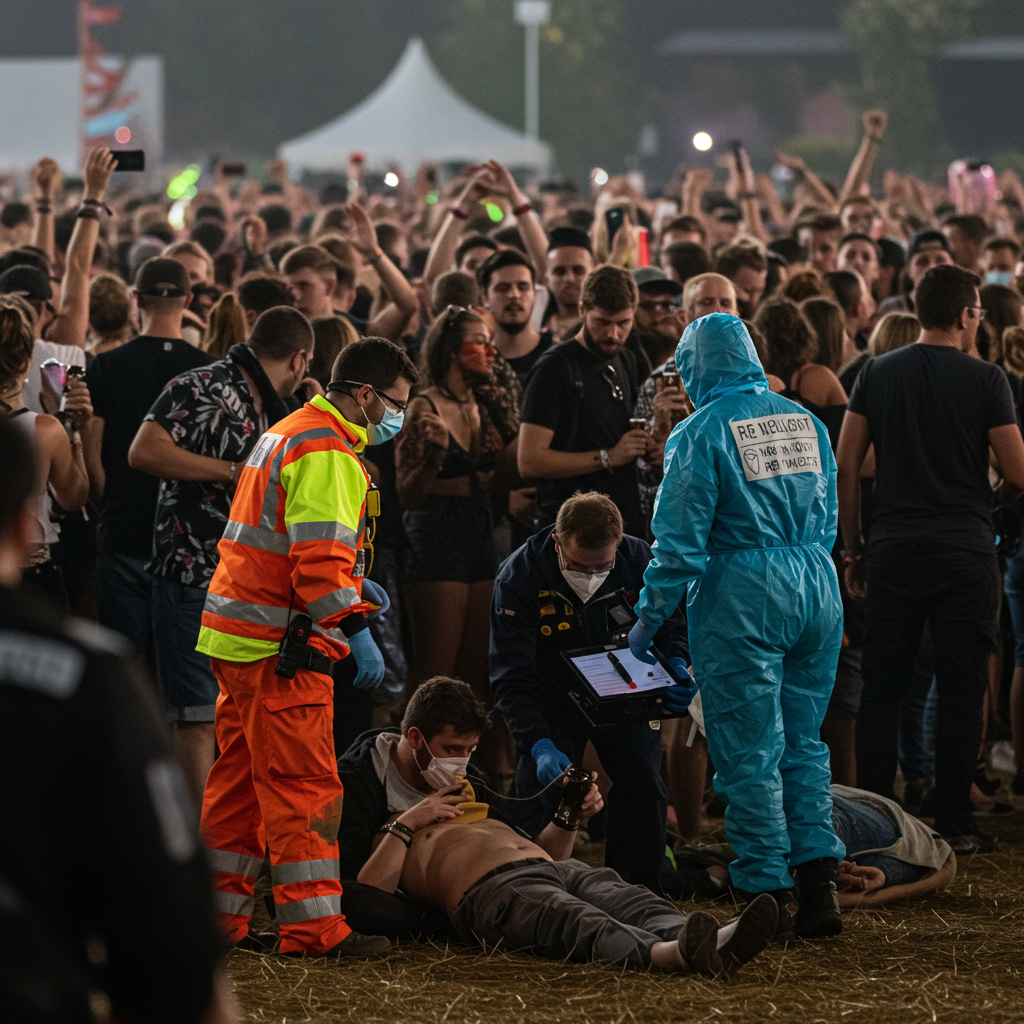Seeking humanitarian aid in Gaza has tragically become a life-threatening endeavor for Palestinians facing severe hunger. Recent incidents near food distribution points have resulted in dozens, potentially hundreds, of deaths and injuries, sparking widespread condemnation from the United Nations and aid agencies who have labelled the current system a “death trap” and a “weaponisation of food.”
According to rescuers, hospitals, and the Hamas-run health ministry, numerous fatal events have unfolded across central and southern Gaza in recent weeks. These include reports of mass casualties near sites distributing aid, primarily those associated with the controversial Gaza Humanitarian Foundation (GHF), a private entity backed by the US and Israel.
Tragedy Near Aid Distribution Points
Specific incidents reported include:
At least 46 people killed in two separate events in central and southern Gaza, according to initial reports from rescuers and hospitals.
A Hamas-run health ministry report stating at least 30 Palestinians were killed by Israeli gunfire near GHF sites in Rafah and the central Netzarim corridor on one recent Monday.
Reports of 51 Palestinians killed and over 200 wounded near a World Food Programme (WFP) site in Khan Younis, southern Gaza, with witnesses and rescuers citing drone strikes and tank fire on crowds. The UN, citing health partners, put the death toll for this specific incident at over 60.
Multiple incidents over three days near a new GHF site (SDS 1) in Tal al-Sultan, southwest Gaza, resulting in at least 31 deaths reported on one Sunday morning, three more on Monday, and another 27 on Tuesday morning, according to the Civil Defence agency and health officials.
Eleven Palestinians killed among at least 33 overall reported dead by Israeli gunfire and strikes across Gaza on one recent Wednesday, including those seeking aid on the main Salah al-Din Road.
Seven more deaths among people seeking aid near Rashid Street northwest of Gaza City, attributed by a doctor to strikes and gunfire.
Witnesses describe chaotic and terrifying scenes. Crowds, often numbering in the thousands, gather in designated or de facto aid zones, desperate for food. Testimonies recount sudden Israeli tank advances, unannounced open fire, drone strikes, and widespread gunfire coming from multiple directions directly targeting civilians. Footage from hospitals shows beds filled with young men suffering gunshot wounds, the injured covering floors, and bereaved families mourning loved ones.
One widow recounted her son being shot and wounded while trying to collect food, asking, “Why are our children’s lives seen as so cheap?” Another father, who refers to aid centres as “death zones,” tragically stated he would not risk his life after his son was killed, asking, “Every day people go there and die. What are we to do?” A survivor of an incident near Rafah described blood everywhere, barely able to rescue one relative amid the chaos.
A System Under Severe Criticism
The Gaza Humanitarian Foundation (GHF) became operational after Israel partially eased its blockade over a month ago. While officially private, its opaque funding and backing by the US and Israel are widely criticized. The GHF employs armed private security contractors and is viewed by Israel as central to a new aid plan intended to undermine Hamas control and potentially bypass existing UN humanitarian efforts.
However, UN agencies and major aid groups have largely refused to cooperate with the GHF. Critics argue the foundation cooperates with Israel’s wartime goals in a manner that violates humanitarian principles, compromises neutrality, impartiality, and independence. Philippe Lazzarini, head of the UN agency for Palestinian refugees (UNRWA), powerfully described the GHF mechanism as “an abomination that humiliates and degrades desperate people” and a “death trap costing more lives than it saves.” He has also called it “lame, medieval and lethal.”
Thameen al-Kheetan, spokesman for the UN human rights office, condemned Israel’s “militarised humanitarian assistance mechanism,” stating it contradicts international standards. He added that “the weaponization of food for civilians, in addition to restricting or preventing their access to life-sustaining services constitutes a war crime,” noting that courts must make the final determination. UN Human Rights Chief Volker Turk has echoed this, accusing Israel of “weaponising food” and calling for a full investigation into the attacks near aid sites.
Humanitarian groups highlight that the GHF’s designated single routes and limited distribution points are inadequate compared to the hundreds previously available under the UN system, making the new system “designed to fail,” according to one analyst. Desperate need forces people to gather in large, uncontrolled crowds along transport routes or near limited sites, increasing risk.
Israeli Response and Ongoing Challenges
The Israel Defense Forces (IDF) have provided various responses to the reported incidents. Statements typically acknowledge identifying gatherings near troops or aid distribution points and indicate that details are under review. In some cases, the IDF has stated troops fired warning shots at individuals approaching them or described firing at “suspects” perceived as posing a threat after warning shots were disregarded. The IDF has also denied awareness of specific incidents.
The IDF maintains that it allows the GHF to “operate independently” and is working to ensure “safe and continuous distribution, in accordance with international law.” They have also stated that Hamas is responsible for causing much of the violence near aid sites and have warned Palestinians against approaching certain areas at night.
However, the near-daily killings near aid sites underscore a severe breakdown in both security and the aid distribution system itself. Despite Israel still allowing some aid lorries for the UN and other groups like World Central Kitchen, the volume of food remains drastically inadequate. Experts warn Gaza is on the brink of famine, fueling the desperation that drives people to risk death for a basic necessity like flour.
Verifying events on the ground remains challenging, as Israel does not permit international news organizations into Gaza. While the GHF claims incidents happen away from their sites, and the IDF suggests actions are taken against threats, witness accounts consistently describe civilians being targeted while waiting for food.
With the humanitarian situation worsening and international attention sometimes shifting, the tragic reality persists: Palestinians are losing their lives in the desperate search for aid, caught between starvation and the lethal risks of distribution points.




